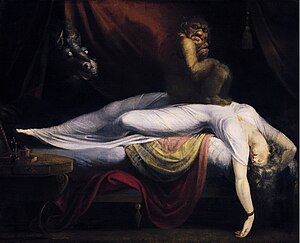Eddy and Boyd in a classic case of special pleading argue for the reality of demon-possession today:
We do not wish to dispute that some, if not the majority, of these reports [of “demonization”] may be explained in naturalistic terms. But what justification is there for assuming that all such reports of the supernatural can be reductively explained in naturalistic terms? (The Jesus Legend p.70)
Roy Williams uses the same special pleading to argue for the reality of miracles:
My own view is that the consistency of such reports through human history is suggestive that miracles do — rarely — occur. Has the Catholic Church always been wrong when, as a precondition to conferring sainthoods, it has accepted reports of miracles? I doubt it. (See earlier posts on God, Actually)
This is the same as saying:
We know that natural explanations have been found for most things that we observe in the world, but there are still a few things we have not yet explained. Therefore we can have confidence that anything as of today that is still not understood in terms of natural processes is the work of supernatural powers.
Or even
If there was a natural explanation for cancer we would have discovered a cure for it by now, so we can be assured that only prayer and exorcism have the power to cure cancer.
This is certainly a strong indicator of a will to believe despite all first hand evidence to the contrary. The grounds for one’s belief are removed to hearsay, to the word of a friend of someone who knows someone who read about someone of impeccable honesty who said they saw someone who . . . . and so forth. Or simply, my devoutly religious granny says she experienced an angel visiting her and she wouldn’t lie.
Or if we do experience something unexplained or mysterious first hand, how often are we willing to investigate alternative explanations or simply hold an opinion in abeyance until the answer does emerge.
I used to experience sleep paralysis, but since I had no idea what it was at the time, and being very religious, and comparing the experience with other reports I heard from fundamentalist friends, I did fear I was being visited by demons. One can begin to see all sorts of shapes and movements in the dark in that condition.

Later when I read about some people’s experiences of alien abductions I recognized much of what they described as nothing more than that very mundane (admittedly scary) “sleep” condition. How one interprets or explains it depends on one’s cultural environment. Even though those alien abduction or visitation accounts added a few details that did not exactly fit sleep paralysis, I could recognize a tendency to somewhat exaggerate or mix one’s interpretations with the actual experience itself and so present something that was just a wee bit beyond the actual experience, even if personally believed to be part of it.
In a pre-scientific age there is really no way of arriving at a “scientific” explanation for such experiences, of course. So when Eddy and Boyd, and with them Roy Williams, suggest that there is no justification for believing that ALL prescientific (or current nonscientific) reports of unusual experiences have a natural explanation, they are sort of arguing in a closed box.
A passage in Mark’s gospel reminds me of The X-Files: I Want to Believe. Many people today still want to believe there is something to magic after all, that there is or was an Atlantis, that aliens do regularly visit us, that BigFoot/Yeti/Yowie really does exist, that King Arthur’s or the Bible’s adventures really happened, and that angels do exist and miracles happen today just as they always did, as we read about in the New Testament.
I seem to recall that as a child there were some stories I read that I agonizingly wished were true.
I once even had a dream in which I was playing with a toy truck, and so in love was I with this toy truck that as I felt I was coming out of a dream, my dream state told me that if I held on to the truck as tightly as I could in my dream, that when I woke I would find the truck in bed beside me. Well, I did wake up, and was disappointed, but not surprised, to find my clenched fists were holding absolutely nothing! 🙁
